Fresh fruits are a delicious treat, which is why you may be interested in growing them yourselves rather than to always have to purchase them in stores. But what if you live in an area with climates that isn’t exactly friendly for fruit trees?
It is still possible to grow them despite the weather and circumstances. But where? Inside your home!

While you’ll need a lot of light, air circulation, high-quality soil, proper fertilizer, and proper care, then you can successfully grow fruits at home. That said, not all fruits can be grown indoors, so which are the ones to start with?
If you’re considering what fruits to grow, then this is the post for you, as we’ll be listing down the best fruit trees you can grow inside your home.
1. Meyer Lemons
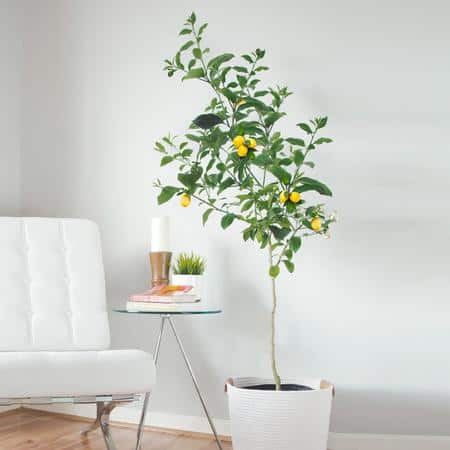
This is known as the citrus and meyeri cross, which is a popular indoor citrus tree, producing sweet lemons. These trees require higher humidity levels than what you usually find at home, so it’s best to plant them near humidifiers or to place a pebble tray under its pot.
Furthermore, these trees love bright light, so place them near south-facing windows or place them under grow lights. They don’t have dormancy phases, so they’ll need a lot of light all year long.
Fun fact: Citrus trees in general are fairly easy plants and trees to grow indoors, many of them bearing delicious fruits! Just make sure that they get a lot of natural light, but avoid them from being exposed to the heat of the afternoon sun, cold temperatures, and extremely dry air.
Read more: Surprising Benefits of Combining Sunlight And Grow Lights For A Better Yield
2. Calamondin Oranges
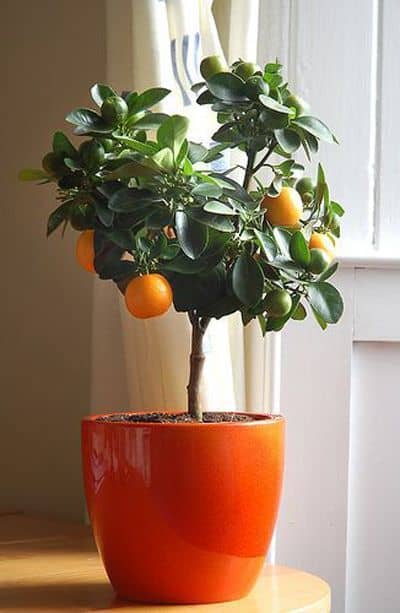
This is hardy citrus that thrives well indoors, an excellent choice for those looking for their first fruits to grow in the house.
Be sure to pot it a bit larger so it can develop proper roots, with soil that is slightly acidic, loamy, and fast-draining. You should only water the plant when the top inch of the potting mix has dried out, and be sure to expose it to direct sunlight daily, for at least a few hours. Fertilize the tree during the spring and/or summer using a citrus-specific formula or slow-release fertilizer made for plants that love acid.
You can also place the tree outside during the summer season, though be sure to acclimate it to the outdoors during springtime, right after frost. And of course, place them in the house before frost begins come fall season.
Read more: 11 Indoor Plants That Don’t Need Drainage
3. Goji Berries
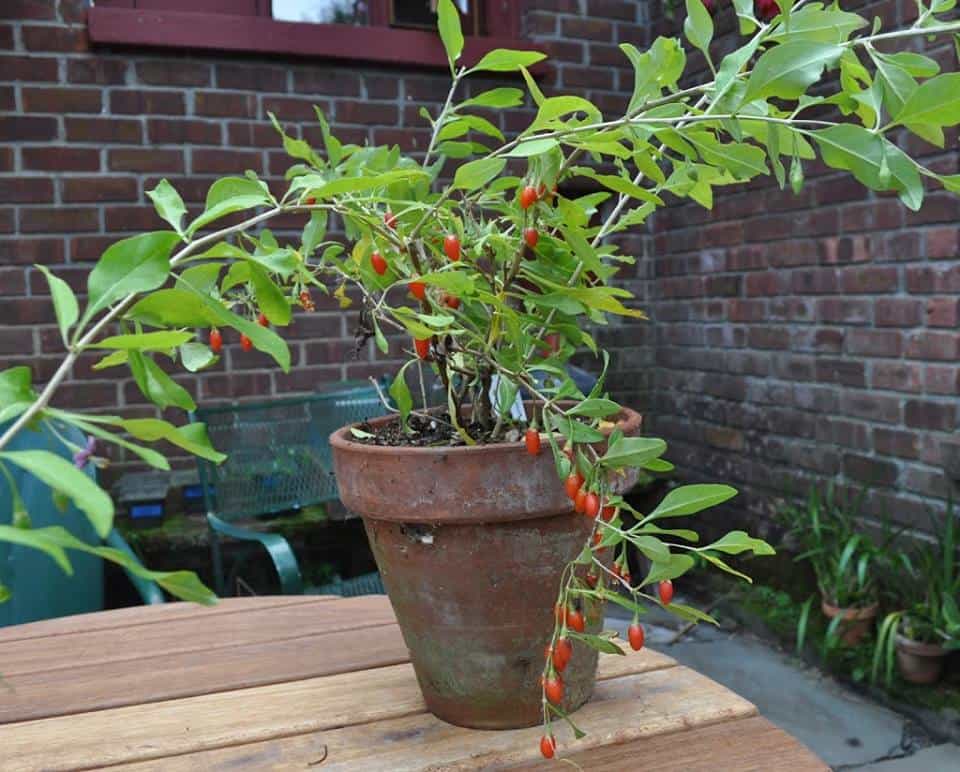
These plants, known as lyceum barbarum, would produce small and delicious berries filled with a ton of vitamins. They’ll have to be in south-facing windows or with grow lights for them to receive the right amount of sunlight.
While they are drought tolerant and don’t like wet feet, so be sure to let their potting mix dry out before you water them. When collecting berries, place a sheet under its pot and shake your plant. The berries will fall to the sheet with ease, for you to collect and enjoy!
4. Dwarf Bananas
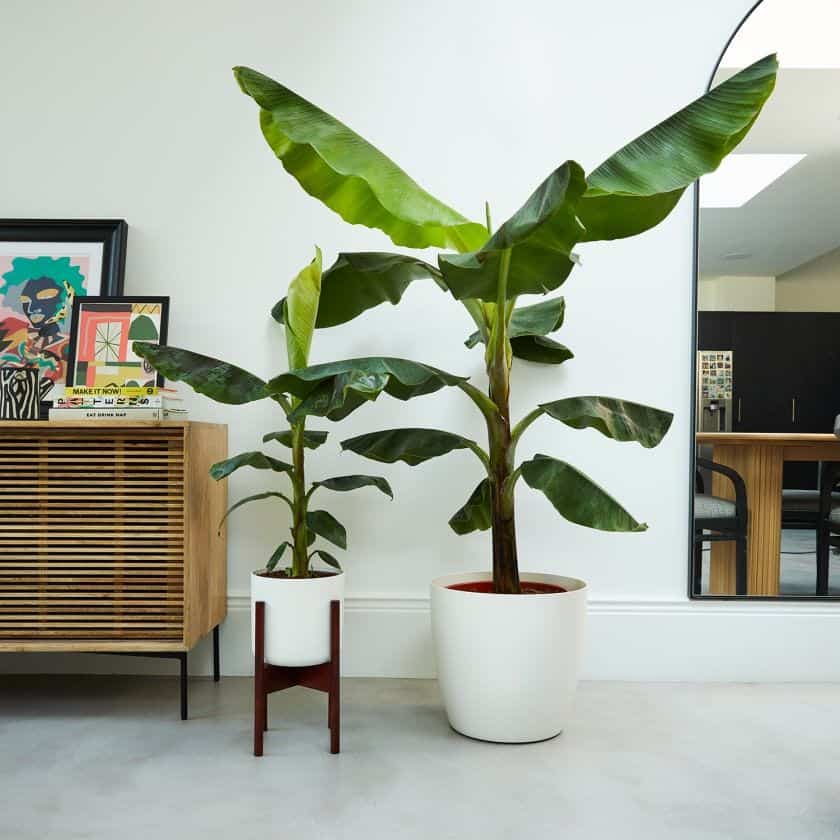
Also known as the Dwarf Cavendish with the scientific name Musa acuminata, this is a smaller banana you can find in local supermarkets. Its trees don big, beautiful, tropical leaves, which require a lot of sun from south-facing windows. BUT, do not give it too much direct sunlight, as this can burn their leaves.
To prevent burnt leaves, have a sheer curtain in front of south-facing windows. Pot the plant with a fast-draining potting mix that has hummus, and when watering, don’t let them sit in water. Note that they require more humidity levels than usual, place them near a humidifier or on a pebble tray.
5. Avocadoes
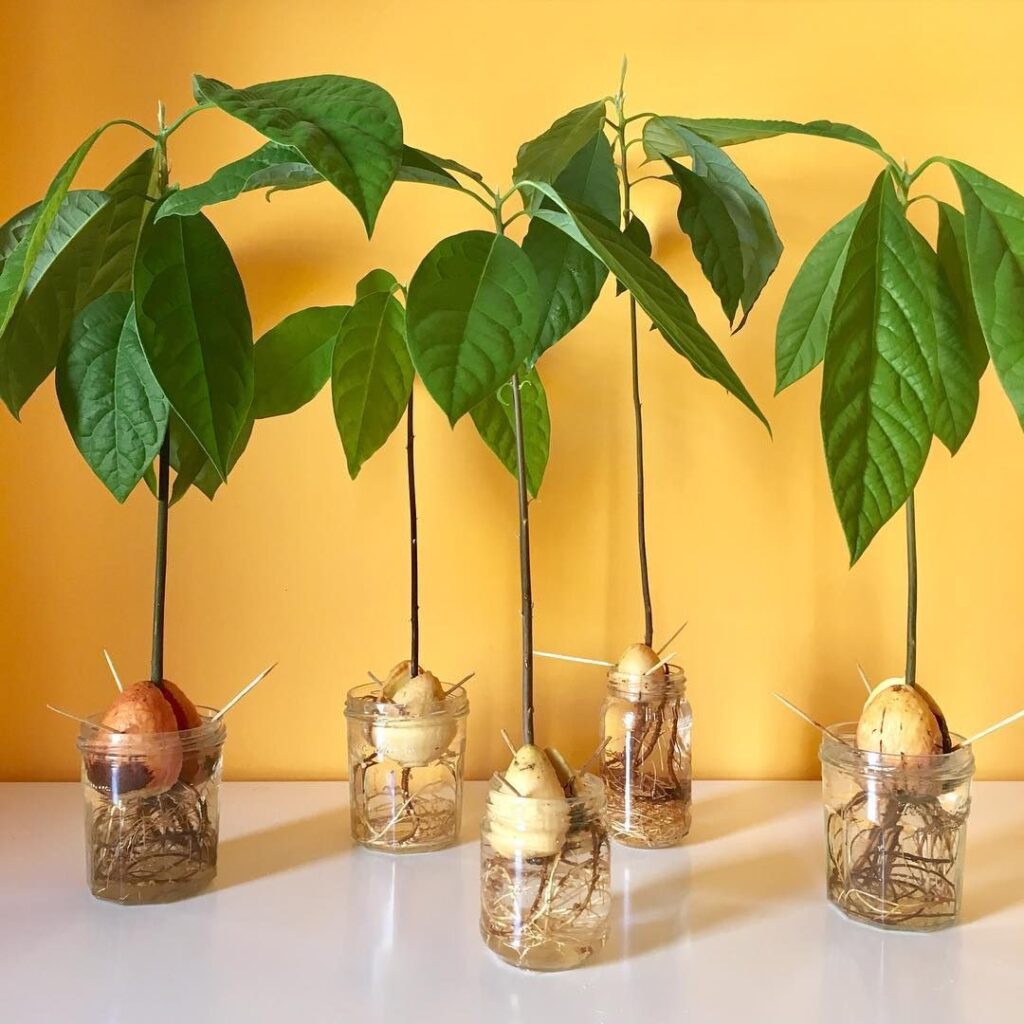
YES, you can actually grow avocadoes indoors or the Persea Americana. These are unique trees bearing delicious and versatile fruits everyone loves. In fact, they are a common houseplant and grown from seed thanks to fruit from the supermarket.
It’s common to grow avocadoes from seeds, usually placing toothpicks in them, then suspending the seed over a cup of water with its bottom half underwater. Then, place them under the sun for at least six hours a day and pot them with the fast-draining mix, never letting it sit in water.
Take note that these trees will grow big in time, so you’ll have to prune them once they are too big for their pot. You may also need to prepare a stake so it can support the plant’s weight properly.
Read more: Can You Grow Avocados in North Carolina?
6. Mulberry Trees
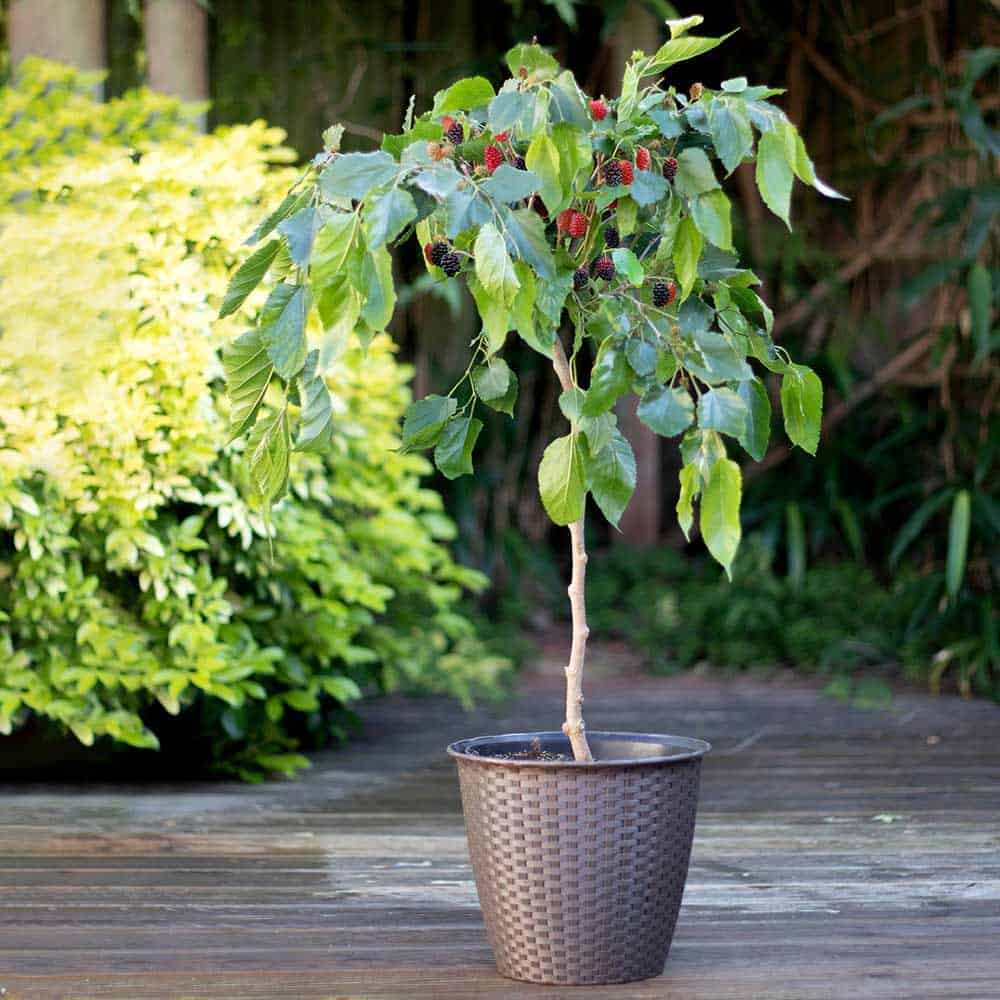
Also known as the Swarf Everbearing with the scientific name Morus Nigra, this tree gives off sweet berries looking like small blackberries. Just like a lot of trees mentioned on the list, they require to be placed by a south-facing window, or in areas where they can receive as much light as possible.
What’s great about Mulberry trees is that they grow very quickly, and even if they are labeled as dwarf varieties, they can grow as tall as 6 feet! Unless you prefer large indoor trees, prune them regularly to keep the tree manageable, just avoid pruning all its new growth.
7. Kumquat
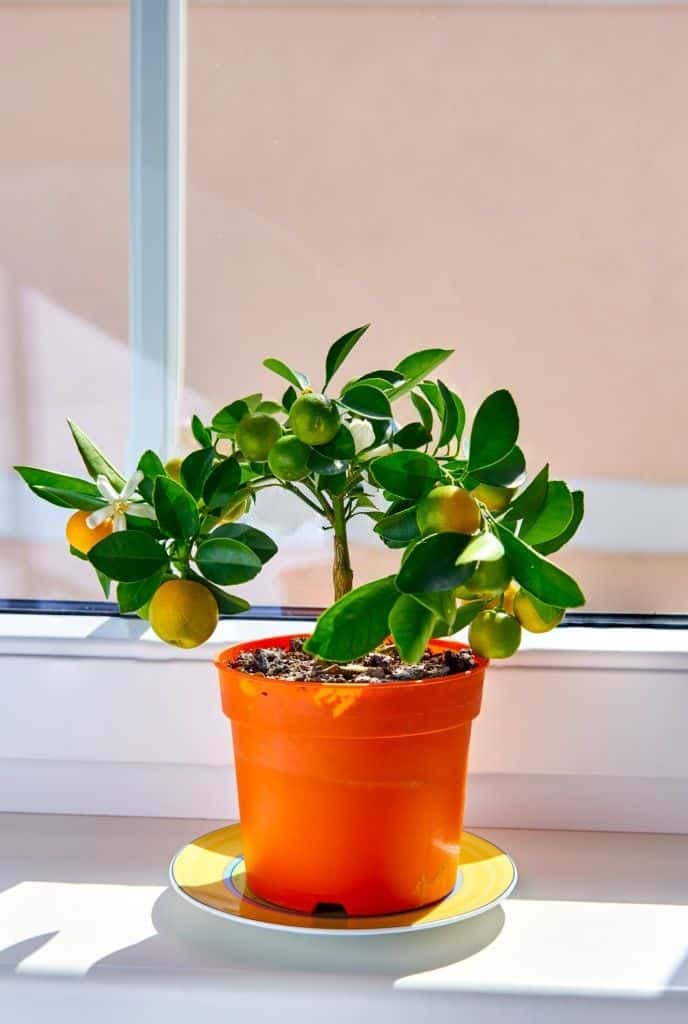
The Kumquat, of the citrus japonica, is a very unique citrus fruit you can eat entirely, including the peel. The fruit itself is pretty sour while the peel has a very sweet and citrus flavor, balancing everything out. Simply pop a whole fruit in your mouth and enjoy its interesting flavor!
When growing these, do give them as much sunlight as possible with high humidity levels. While they are young, pinch back a few of its growth tips to keep the plant bushy and study, which is helpful for it to bear fruit efficiently.
Read more: Best Plants for Office Desk with No Windows
8. Apricot Trees

The apricot tree, or the goldcot with the scientific name Prunus armeniaca, is just one of the other varieties of dwarf apricot trees one can grow indoors with ease. It needs a large pot or container and potting mix that is slightly acidic, loamy, and well-draining. As for caring for the plant, you should water them thoroughly until water drips from the bottom of its pot, but only when its top inch is dry.
Expect this tree to bear yummy fruit while displaying stunning small flowers come springtime. This tree isn’t only popular for its fruits, but to bonsai, as they are smaller and are great when pruned.
Like most trees on the list, give it as much light as possible indoors, moving it out come spring and/or summer. Place them inside during the fall season, once it seems like frost is coming in.
Wrapping It Up
What’s great about indoor gardens is that you can grow your own fruits, and it’s actually pretty easy to do. Even if you haven’t grown fruits on your own before, it’s possible, provided that you select the right ones that are suitable for your area’s conditions and give everything it needs. In time, you can enjoy tasty fruits and be proud to have grown them on your own.
Now that you have this list and some growing tips, look into planting any of these and enjoy the process! Happy gardening and good luck tending to these amazing fruit plants and trees.
